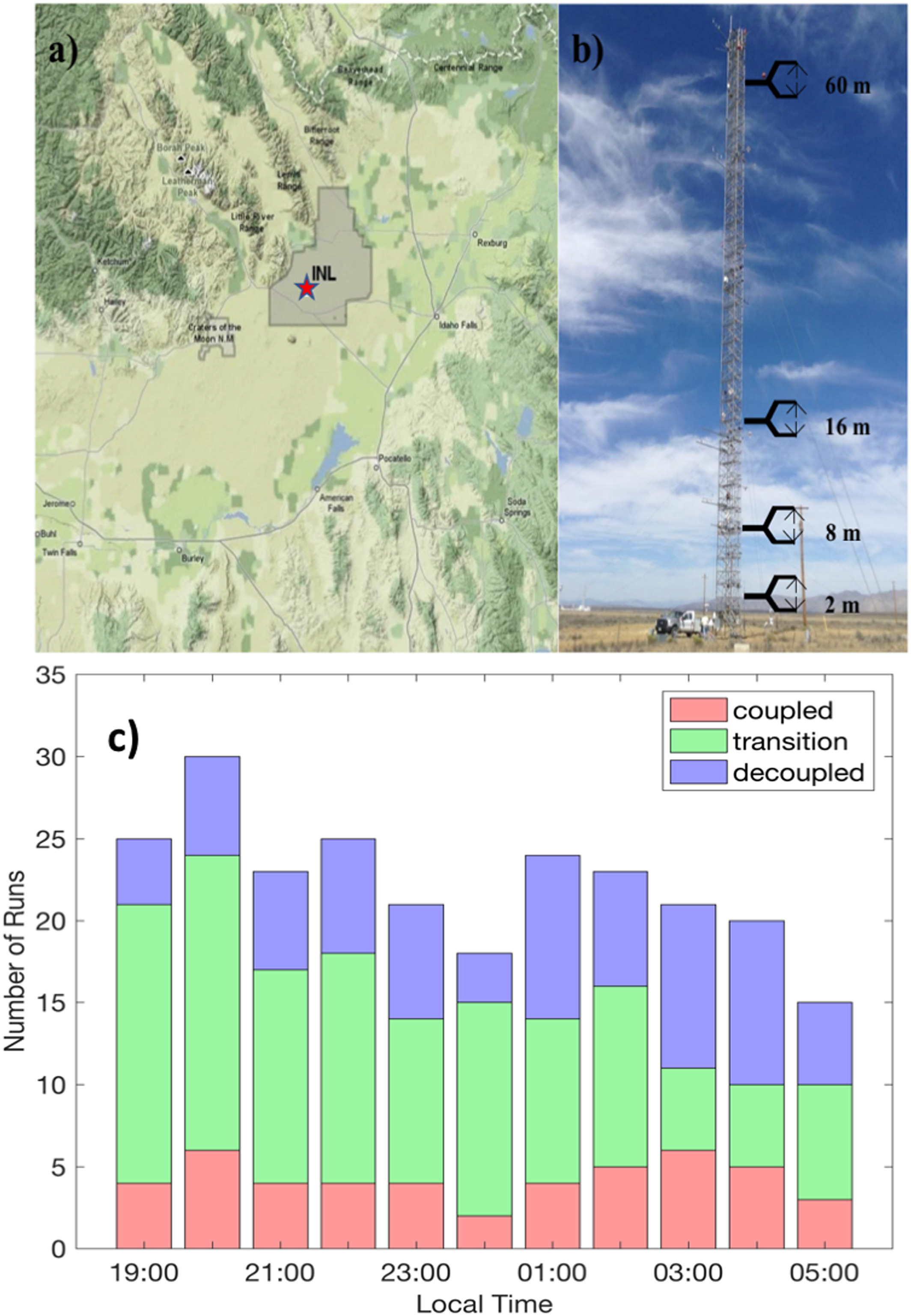FRD Scientist Co-Authors Paper Featured on the Cover of JGR: Atmospheres
August 2018
August 2018
Dr. Dennis Finn co-authored “Distinct Turbulence Structures in Stably Stratified Boundary Layers with Weak and Strong Surface Shear,” an article featured on the cover of this month’s Journal of Geophysical Research: Atmospheres. The paper’s basis is comprised of turbulence observations collected at ARL’s Field Research Division (FRD) in Idaho Falls, Idaho, during a series of tracer studies. Named Project Sagebrush, the tracer studies were a collaboration between Washington State University and FRD.
The paper examines the relationships between boundary layer structure, turbulence, and wind speeds, and their combined impact on the state of the stable boundary layer (the atmospheric layer that we live in). Improved understanding of these interactions, in turn, will improve the accuracy of current weather, climate, and plume dispersion models. The highlighted cover image is of the unifying model proposed by the authors for the stable boundary layer.
UPDATE 9/24/18: This paper is now a featured Eos Research Spotlight titled, “Wind Speed Governs Turbulence in Atmospheric Inversions.” EOS is a monthly magazine from the American Geophysical Union, recognized as one of the atmospheric science community’s leading sources for Earth and space science news.
